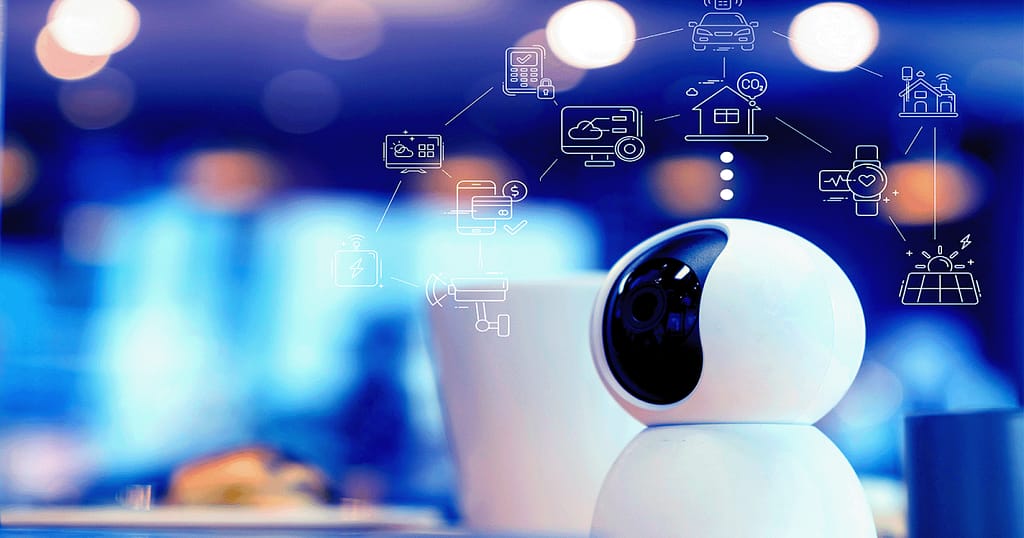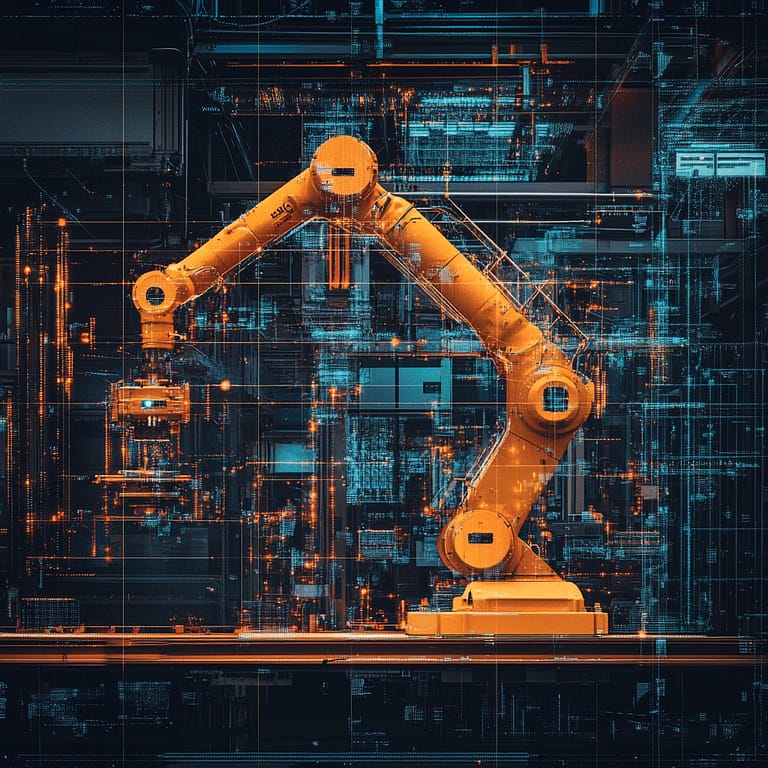You might not realize it, but you’re probably already interacting with the Internet of Things (IoT) every single day.
From your smart thermostat adjusting the temperature to your fitness tracker monitoring how much you’ve been walking, these connected devices are slowly transforming our world. But IoT’s reach extends beyond our homes and personal gadgets: it’s already transforming industries, from manufacturing and healthcare to agriculture and transportation.
At the core of this revolution, we have IoT monitoring solutions – powerful tools that provide valuable insights and control over these interconnected devices.
But are they just a passing fad, or are they here to stay? This article will explain what IoT monitoring solutions really are, some of the tech behind them, answer whether they’re a temporary trend, and provide use cases for your business!
Let’s cut to the chase.
What are IoT monitoring solutions?

IoT monitoring solutions refer to systems designed to track and manage connected devices within the IoT ecosystem.
At a high level, they collect data from various sensors and devices, analyze it, and provide valuable insights to businesses and organizations. This data can include information about location, temperature, humidity, pressure, vibration, and more, depending on the specific application.
The primary purpose of IoT monitoring solutions is to gather this data and transform it into actionable intelligence, enabling businesses to optimize operations and improve efficiency. Some say knowing is half the battle – so you can make better decisions overall with proper data in your hands.
What are the key technologies behind IoT-based solutions?
Several key technologies work together to enable effective IoT monitoring solutions.
First, we have sensors, often considered the eyes and ears of IoT ecosystems. They’re the tiny devices that collect data from the physical world, measuring everything from temperature and humidity to pressure and vibration. Different types exist, each designed to measure specific parameters, making them incredibly versatile and adaptable to diverse situations.

Once the sensors have done their job, they need a way to share it with the rest of the system. That’s where connectivity comes in. It refers to the communication protocols and networks that allow devices to transmit data wirelessly. Common options include Wi-Fi, cellular networks (like 5G), and even satellite communication for remote and hard-to-reach locations.
With all that data flowing in from countless sensors, you need a place to store and process it all. Cloud computing is the key technology behind this, providing the infrastructure for storing, managing, and analyzing massive amounts of data. They also make it possible to scale your IoT monitoring solutions without breaking the bank.
Then, we have data analytics – raw data is only useful if you can make sense of it. They help you sift through the data to extract meaningful insights to inform your decisions.
Similarly, we have machine learning and artificial intelligence, two hot topics at the moment. They can analyze data and find patterns within, potentially predicting future patterns and automating tasks!
Sometimes, you need to process data right at the source to save precious time. Edge computing allows it to happen directly on the device itself, enabling much faster response times. As you might imagine, this is critical for time-sensitive decisions, such as emergency response systems.
IoT monitoring solutions: a massive fad or the future?
With any emerging technology, there’s always the question of longevity. Are IoT monitoring solutions just a passing trend, or are they here to stay?

Well, the evidence overwhelmingly points to the latter. IoT monitoring solutions are rapidly gaining traction across various industries, and their impact is undeniable – they represent a fundamental shift in how businesses operate and manage their assets.
Why? Well, consider the offered benefits: reduced downtime, improved efficiency, optimized resource utilization, and enhanced safety. These are key drivers of profitability and sustainability in the modern business world.
Moreover, the constant evolution of underlying technologies like 5G, AI, and edge computing ensures that IoT monitoring solutions will only become more powerful and versatile in the years to come.
The growing adoption of IoT monitoring solutions across diverse sectors cements their staying power. From manufacturing and agriculture to healthcare and transportation, businesses recognize how these solutions can transform their pipeline for the better.
Also, the increasing investment in IoT infrastructure and the emergence of industry standards signal a long-term commitment to this technology. Governments and organizations worldwide believe these devices and their surrounding tech will drive economic growth and societal improvements, further fueling their adoption and development.
So, IoT monitoring solutions are not a fad, but a shift in how we manage and interact with the world around us. They offer tangible benefits, are rapidly gaining adoption, and are supported by a growing ecosystem of technologies and investments.
Use cases for IoT monitoring solutions

IoT monitoring solutions are proving their worth across a wide range of industries every day, each with unique challenges and opportunities. Let’s explore how these solutions make a tangible difference in various sectors.
In manufacturing, sensors embedded in machinery provide early warnings of potential malfunctions, allowing for proactive maintenance and preventing costly downtime. This predictive approach optimizes production processes and ensures consistent product quality.
In industries where temperature, humidity, or pressure are critical factors, IoT monitoring helps maintain optimal conditions, preventing defects and ensuring product integrity.
The supply chain benefits from real-time tracking of goods, ensuring timely delivery and minimizing the risk of damage or loss. Sensors on packages and vehicles provide granular visibility, allowing businesses to optimize logistics operations and maintain customer satisfaction.
Moreover, this real-time tracking data simplifies CSRD Scope 3 reporting, providing accurate and verifiable information about emissions and environmental impact.

Healthcare is experiencing a transformation with IoT monitoring solutions. Wearable devices track vital signs, alerting medical professionals to potential emergencies and enabling proactive intervention.
In hospitals, sensors monitor equipment performance, enhancing patient safety and ensuring optimal functionality. Additionally, with IoT-based equipment tracking, medical staff won’t have to spend time looking for it if they always know where it is. In some cases, a mere second may be the difference between life and death, so there’s a lot to be gained!
The agricultural industry leverages IoT monitoring solutions to optimize crop yields and conserve resources. Sensors in the field monitor soil conditions, moisture levels, and weather patterns, enabling farmers to make informed decisions about irrigation, fertilization, and pest control.
Smart cities rely heavily on IoT monitoring solutions to improve public safety and enhance the quality of life for residents. Sensors embedded in infrastructure monitor traffic patterns, air quality, and potential hazards, allowing for proactive management and the development of more sustainable urban environments.

Conclusion
Throughout this piece, we’ve explored the ins and outs of IoT monitoring solutions, from the underlying technologies that power them to their diverse applications across various industries. We’ve also answered the burning question – fad or future? – with the evidence clearly pointing to the latter.
So, IoT monitoring solutions represent a fundamental shift in how businesses operate and manage their assets. They offer tangible benefits, are rapidly gaining adoption, and are supported by a growing ecosystem of technologies and investments. The future of business is connected, and you wouldn’t want to be left in the dust!
If you’re looking to harness the power of IoT monitoring solutions for your business, Datanet IoT offers a wide range of cutting-edge solutions tailored to your specific needs. Our team of experts can help you identify the right technology and implement a customized solution that will optimize your operations, improve efficiency, and drive growth.
Contact us today to learn more and let’s work together towards a smarter, more connected future!




